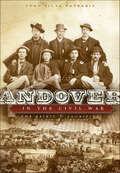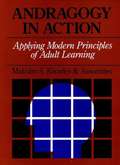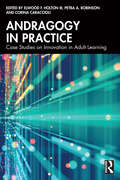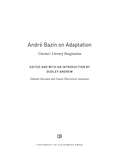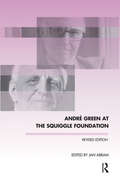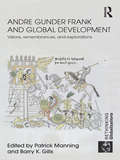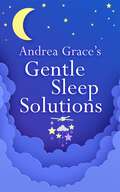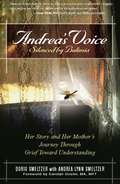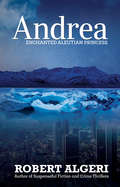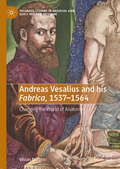- Table View
- List View
Andover
by Andrew Grilz Norma Gammon Andover Historical SocietyAndover, geographically one of the largest townships in the Commonwealth of Massachusetts, has a long and illustrious history. Founded more than 350 years ago, Andover has played a part in several critical events in American history, including the French and Indian wars, the witchcraft hysteria of the 1690s, the American Revolution, the abolitionist movement, the Civil War, and the Industrial Revolution. It is the birthplace of the song "America," written by Samuel Francis Smith. It has been the home of such notables as Anne Bradstreet, the first poet in the New World; Salem Poor, former slave and hero of the Battle of Bunker Hill; Samuel Osgood, the first postmaster general of the United States; and Harriet Beecher Stowe, author of Uncle Tom's Cabin. It is home to the Andover Village Improvement Society, the second-oldest land conservation group in America. Pres. Franklin Pierce called Andover his summer home, and countless leaders of business and government resided in Andover while students at Phillips Andover Academy, one of the most prestigious private academies in the country.
Andover in the Civil War: The Spirit and Sacrifice of a New England Town (Civil War Series)
by Joan Silva PatrakisThey departed Boston in August 1861 to a cheering crowd and the tune of "John Brown's Body."? Though some of these Andover soldiers would not "see the elephant"? until two years later, more than a quarter of them would never return to their beloved hometown. Drawing on journals, letters and newspaper articles, Andover in the Civil War chronicles the journey of these brave men and brings to life the efforts of those who remained on the homefront. Harriet Beecher Stowe and Elizabeth Stuart Phelps were just two Andover citizens who threw themselves wholeheartedly into the Union cause. Lesser known but equally impressive was Robert Rollins, who migrated to Andover in 1863 and enlisted in the North's first all-black regiment. Historian Joan Silva Patrakis introduces many more patriotic characters and moving stories from this "Hill, Mill and Till"? town during the bloodiest years of America's history.
Andragogy in Action: Applying Modern Principles of Adult Learning
by Associates Malcolm S. KnowlesProvides over thirty case examples from a variety of settings illustrating andragogy (principles of adult learning) in practice.
Andragogy in Practice: Case Studies on Innovation in Adult Learning
by Elwood F. Holton III, Petra A. Robinson, and Corina CaraccioliAndragogy in Practice is a timely book of case studies, which offers readers the opportunity to see andragogy in practice solving real-world challenges in a variety of adult learning contexts. It highlights the wonderful range of innovative practices that characterize adult learning today.Holton, Robinson, and Caraccioli, authors of the bestselling The Adult Learner, bring a variety of diverse and inspiring extended cases together from a range of experienced teaching and learning specialists. Showing the broad scope, power, and potential of adult learning using andragogy, case topics include Artificial Intelligence, Online Learning in Higher Education, Human Resource and Leadership Development, Curriculum and Faculty Development and Art-Based Learning. The book can be used in conjunction with The Adult Learner or as a standalone text and provides a wealth of resources for educators, students, and practitioners looking to further their understanding of how andragogy is being applied in new and innovative ways. Experienced adult educators will be challenged to be more innovative in their own practices. For reflection and further dialog, each case includes a set of discussion questions to enhance engagement and understanding.Students and practitioners of human resource development and adult education will enjoy the engaging, innovative, and insightful cases in this book addressing andragogical practices in the contemporary society.
Andre Bazin on Adaptation: Cinema's Literary Imagination
by André BazinAdaptation was central to André Bazin’s lifelong query: What is cinema? Placing films alongside literature allowed him to identify the aesthetic and sociological distinctiveness of each medium. More importantly, it helped him wage his campaign for a modern conception of cinema, one that owed a great deal to developments in the novel. The critical genius of one of the greatest film and cultural critics of the twentieth century is on full display in this collection, in which readers are introduced to Bazin's foundational concepts of the relationship between film and literary adaptation. Expertly curated and with an introduction by celebrated film scholar Dudley Andrew, the book begins with a selection of essays that show Bazin’s film theory in action, followed by reviews of films adapted from renowned novels of the day (Conrad, Hemingway, Steinbeck, Colette, Sagan, Duras, and others) as well as classic novels of the nineteenth century (Bronte, Melville, Tolstoy, Balzac, Hugo, Zola, Stendhal, and more). As a bonus, two hundred and fifty years of French fiction are put into play as Bazin assesses adaptation after adaptation to determine what is at stake for culture, for literature, and especially for cinema. This volume will be an indispensable resource for anyone interested in literary adaptation, authorship, classical film theory, French film history, and André Bazin’s criticism.
Andre Bazin's New Media
by Dudley Andrew André BazinAndré Bazin's writings on cinema are among the most influential reflections on the medium ever written. Even so, his critical interests ranged widely and encompassed the "new media" of the 1950s, including television, 3D film, Cinerama, and CinemaScope. Fifty-seven of his reviews and essays addressing these new technologies--their artistic potential, social influence, and relationship to existing art forms--have been translated here for the first time in English with notes and an introduction by leading Bazin authority Dudley Andrew. These essays show Bazin's astute approach to a range of visual media and the relevance of his critical thought to our own era of new media. An exciting companion to the essential What Is Cinema? volumes, André Bazin's New Media is excellent for classroom use and vital for anyone interested in the history of media.
Andre Green at the Squiggle Foundation
by Jan AbramDespite being one of the foremost psychoanalysts working today, much of Andre Green's work has until recently been unavailable in English. This work aims to rectify this, by collecting together five lectures given to the Squiggle Foundation in London. This accessible and clearly written book provides a unique introduction to Green's work and its relation to the work of D.W. Winnicott, as promoted by the Squiggle Foundation itself. The Squiggle Foundation has as its goal "to study and cultivate the tradition of D.W. Winnicott", and has achieved an international reputation in doing so. Dr Green's lectures touch particularly on the links between his thought and that of Winnicott - as can be seen from the lecture titles: "Experience and Thinking in Analytic Practice", "Objects(s) and Subject", "On Thirdness", "The Posthumous Winnicott: On Human Nature", and "The Intuition of the Negative Playing and Reality".
Andre Gunder Frank and Global Development: Visions, Remembrances, and Explorations (Rethinking Globalizations)
by Patrick Manning Barry K. GillsThis work focuses on the ideas and influence of Andre Gunder Frank, one of the founding figures and leading analysts of political economy at the global level. Through discussion of his work the contributors in this volume examine the shifting currents of the world economy and the accompanying controversies, advances, and regressions in the understanding of global patterns in present and past. Frank's publications from the 1960s to his death in 2005 enlivened and advanced debates on every continent. He analyzed Latin American dependency, long-term accumulation of capital, world systems, shifting dominance in the world economy, and social movements. His style of wide-ranging scholarship, shared by a growing number of analysts, demonstrated its relevance to the basic causes and effects of economic and social change. This collection provides a comprehensive overview of the legacy of Frank’s work and takes stock of the recent and expected developments in global and historical analysis of political economy. It will be of great interest to students and scholars of international political economy, international relations and political theory.
Andre Talks Hair
by Andre Walker<p>Andre Walker, five-time Emmy Award-winning hairstylist for the Oprah Winfrey Show, has the solutions to your hair problems, from finding the right stylist to maintaining your crowning glory. <p>Based on your hair type, Andre will fill you in on the dos and don'ts of hair care and help you determine the best look for your lifestyle. He'll teach you how to maintain your new tresses and add versatility by "doing the 'do" - adding color, texture and other accents without damaging what nature gave you. Andre also celebrates the beauty of gray hair with advice on how to create a well-cut, healthy head of gorgeous silver. </p>
Andrea Bocelli: A Celebration
by Antonia FelixThe author presents text and pictures from Andrea Bocelli's life. Information concerning how different conductors worked with Andrea as he made his entrance in the opera are included.
Andrea Dworkin: The Feminist As Revolutionary
by Martin DubermanFifteen years after her death, Andrea Dworkin remains one of the most important and challenging figures in second-wave feminism. Although frequently relegated to its more radical fringes, Dworkin was without doubt a profoundly influential writer, thinker, and activist--a formidable, brilliant, and uncompromising public figure who inspired and infuriated in equal measure. Her detractors were eager to reduce her to the caricature of the angry, man-hating feminist who believed that all heterosexual sex was rape, and as a result, her work has long been misunderstood. It is only in recent years, especially with the emergence of the #MeToo movement, that there has been a resurgence of interest in her ideas. Given exclusive access to Dworkin's massive and previously closed archives, award-winning biographer Martin Duberman traces Dworkin's life, from her brutal mistreatment after being arrested for protesting against the Vietnam War and her abusive first marriage through her central, crusading role in the sex and pornography wars of the following decades that sharply divided the feminist movement and continue to reverberate to this day. With a keen eye to how her prolific writing fits into her life and into the history and politics of the time, this is a vital and long-overdue reassessment of the life and work of one of the towering and most complex figures in feminist history. MARTIN DUBERMAN is Distinguished Professor Emeritus of History at the CUNY Graduate Center, where he founded and for a decade directed the Center for Lesbian and Gay Studies. The author of more than twenty books--including Paul Robeson, Stonewall, The Worlds of Lincoln Kirstein, A Saving Remnant, Howard Zinn, Hold Tight Gently, and Has the Gay Movement Failed?--Duberman has won a Bancroft Prize and been a finalist for both the National Book Award and the Pulitzer Prize. Duberman has also won the Lifetime Achievement Award from the American Historical Association, an honorary Doctor of Humane Letters from Amherst College, and an honorary Doctor of Letters from Columbia University.
Andrea Grace's Gentle Sleep Solutions for Toddlers
by Andrea GraceDoes your todder still have trouble sleeping? You're not alone. Designed specifically for the very many parents encountering the same issues as you, this practical, no-nonsense book gives you the insights, tools and strategies to help your child get the rest they need - however difficult the challenge.Featuring up-to-date safe sleeping guidance, and drawing on the latest clinical expertise, this book will help you to devise a gentle, sustainable sleep plan which will work for you and your toddler. It is based on Andrea Grace's work with hundreds of families, and her decades of experience as the UK's longest-standing sleep consultant, to successfully formulate a gentle, sustainable approach, that avoids unnecessary distress for you or your child. It includes coverage of a variety of different needs, from dropping naps to coping with separation anxiety and nursery routines, and provides welcome support for other carers and family members, from babysitters and childminders to grandparents and siblings.WHAT PARENTS SAY:'We loved Andrea's method because it was gentle, kind and based around the needs of the baby.''Andrea has transformed our lives, she is amazing, a sleep guru!''I trusted Andrea and the results spoke for themselves from the very start.''I can't recommend Andrea Grace highly enough.'
Andrea Grace's Gentle Sleep Solutions for Toddlers
by Andrea GraceDoes your todder still have trouble sleeping? You're not alone. Designed specifically for the very many parents encountering the same issues as you, this practical, no-nonsense book gives you the insights, tools and strategies to help your child get the rest they need - however difficult the challenge.Featuring up-to-date safe sleeping guidance, and drawing on the latest clinical expertise, this book will help you to devise a gentle, sustainable sleep plan which will work for you and your toddler. It is based on Andrea Grace's work with hundreds of families, and her decades of experience as the UK's longest-standing sleep consultant, to successfully formulate a gentle, sustainable approach, that avoids unnecessary distress for you or your child. It includes coverage of a variety of different needs, from dropping naps to coping with separation anxiety and nursery routines, and provides welcome support for other carers and family members, from babysitters and childminders to grandparents and siblings.WHAT PARENTS SAY:'We loved Andrea's method because it was gentle, kind and based around the needs of the baby.''Andrea has transformed our lives, she is amazing, a sleep guru!''I trusted Andrea and the results spoke for themselves from the very start.''I can't recommend Andrea Grace highly enough.'
Andrea Grace's Gentle Sleep Solutions: A practical guide to solving your child's sleeping problems
by Andrea GraceDoes your baby have trouble sleeping? You're not alone. Designed specifically for the very many parents encountering the same issues as you, this practical, no-nonsense book gives you the insights, tools and strategies to help your baby get the rest they need - however difficult the challenge.Drawing on contemporary research and the latest clinical expertise to address the needs of babies at each stage of early development, this book will help you devise a sleep plan which will work for you and your child. It includes coverage of a variety of special needs, from colic to night terrors in older toddlers, and provides welcome support for other carers and family members, from babysitters and childminders to grandparents and siblings. Written by a qualified and registered health visitor, nurse and mental health nurse, and an independent sleep expert, this book will empower you to take control of your baby's sleeping, provide the best for your child, and improve your own mental wellbeing. Most importantly, your baby will get the sleep it needs to grow healthily and happily.ABOUT THE SERIESPeople have been learning with Teach Yourself since 1938. With a vast range of practical, how-to guides covering language learning, lifestyle, hobbies, business, psychology and self-help, there's a Teach Yourself book for whatever you want to do. Join more than 60 million people who have reached their goals with Teach Yourself, and never stop learning.
Andrea Grace's Gentle Sleep Solutions: Teach Yourself (Teach Yourself General)
by Andrea GraceDoes your baby have trouble sleeping? You're not alone. Designed specifically for the very many parents encountering the same issues as you, this practical, no-nonsense book gives you the insights, tools and strategies to help your baby get the rest they need - however difficult the challenge.Drawing on contemporary research and the latest clinical expertise to address the needs of babies at each stage of early development, this book will help you devise a sleep plan which will work for you and your child. It includes coverage of a variety of special needs, from colic to night terrors in older toddlers, and provides welcome support for other carers and family members, from babysitters and childminders to grandparents and siblings. Written by a qualified and registered health visitor, nurse and mental health nurse, and an independent sleep expert, this book will empower you to take control of your baby's sleeping, provide the best for your child, and improve your own mental wellbeing. Most importantly, your baby will get the sleep it needs to grow healthily and happily.ABOUT THE SERIESPeople have been learning with Teach Yourself since 1938. With a vast range of practical, how-to guides covering language learning, lifestyle, hobbies, business, psychology and self-help, there's a Teach Yourself book for whatever you want to do. Join more than 60 million people who have reached their goals with Teach Yourself, and never stop learning.
Andrea Grace’s Gentle Sleep Solutions
by Andrea GraceDoes your baby have trouble sleeping? You're not alone. Designed specifically for the very many parents encountering the same issues as you, this practical, no-nonsense book gives you the insights, tools and strategies to help your baby get the rest they need - however difficult the challenge.Featuring up-to-date safe sleeping guidance, and drawing on the latest clinical expertise, this book will help you to devise a gentle, sustainable sleep plan which will work for you and your baby. It is based on Andrea Grace's work with hundreds of families, and her decades of experience as the UK's longest-standing sleep consultant, to successfully formulate a gentle, sustainable approach without crying it out, or unnecessary distress for you or your child. It includes coverage of a variety of different needs, from colic to reflux and eczema, and provides welcome support for other carers and family members, from babysitters and childminders to grandparents and siblings.WHAT PARENTS SAY: 'We loved Andrea's method because it was gentle, kind and based around the needs of the baby.''Andrea has transformed our lives, she is amazing, a sleep guru!''I trusted Andrea and the results spoke for themselves from the very start.''I can't recommend Andrea Grace highly enough.'
Andrea Grace’s Gentle Sleep Solutions
by Andrea GraceDoes your baby have trouble sleeping? You're not alone. Designed specifically for the very many parents encountering the same issues as you, this practical, no-nonsense book gives you the insights, tools and strategies to help your baby get the rest they need - however difficult the challenge.Featuring up-to-date safe sleeping guidance, and drawing on the latest clinical expertise, this book will help you to devise a gentle, sustainable sleep plan which will work for you and your baby. It is based on Andrea Grace's work with hundreds of families, and her decades of experience as the UK's longest-standing sleep consultant, to successfully formulate a gentle, sustainable approach without crying it out, or unnecessary distress for you or your child. It includes coverage of a variety of different needs, from colic to reflux and eczema, and provides welcome support for other carers and family members, from babysitters and childminders to grandparents and siblings.WHAT PARENTS SAY: 'We loved Andrea's method because it was gentle, kind and based around the needs of the baby.''Andrea has transformed our lives, she is amazing, a sleep guru!''I trusted Andrea and the results spoke for themselves from the very start.''I can't recommend Andrea Grace highly enough.'
Andrea Immer's Wine Buying Guide for Everyone
by Andrea ImmerOne of only 11 female sommeliers in the world, Immer provides sound advice for everything from buying wine online to navigating restaurant wine lists to making the most of tasting seminars.
Andrea Jung: Empowering Avon Women (A)
by William W. GeorgeIn October 2005 Andrea Jung is coping with a 30% decline in Avon's stock price--the biggest test of her leadership since she became CEO in 2000.
Andrea Robinson's 2007 Wine Buying Guide For Everyone
by Andrea RobinsonCompletely updated with information on more than 800 of the country's top-selling wines (100 more than were included in the 2006 edition), Andrea Robinson's buying guide is dedicated to the best-quality, most popular, and most readily available wines found in stores and restaurants. In addition to giving the lowdown on taste and value, this compact resource is packed with unique features such as: · Candid "from the trenches" comments from consumers and wine pros alike · Results of "kitchen survivor test," revealing how each wine fares as a leftover · Robinson's Best Bets or solving every buying dilemma, from hip wines to impress a date to blue-chip choices for a client · Listing of the years' top-performing wines at every price level, from steal to splurge
Andrea's Voice: Silenced by Bulimia
by Carolyn Costin Doris Smeltzer Andrea Lynn SmeltzerVibrant, talented, strong, and beautiful, Andrea Smeltzer seemed destined for a great future. But after a one-year struggle with bulimia, she died in her sleep at age 19, catapulting her mother Doris into a wrenching but ultimately rewarding journey of discovery. This unabashed account not only speaks about one family's tragedy, but also critiques the social and personal attitudes toward our bodies and appearance that create victims like Andrea. Andrea's poetry and journal entries, combined with her mother's reflections, offer insight and understanding about a crushing disorder that afflicts far too many young people.
Andrea: Enchanted Aleutian Pricess
by Robert AlgeriI met Andrea Altiery in 1981; the first thing she asked was, “Do you like the rock band Aerosmith?” I responded, “Yes.” She smiled and slapped me on my left shoulder telling me, “Dream on my friend.” Later that year Andrea was taken from us by the most notorious serial killer to ever hunt in the state of Alaska. Get ready to collectively ride an emotional ride through urban Alaska while looking through a steamy window for lost love; love that's never found and love that maybe never was. I can only imagine the helplessness; the complete feeling of being alone these women had; Andrea must have had, preyed upon all of their spirit's gathering together now. Victims of circumstance; none of these women deserved to be mistreated like Andrea; dehumanized, erased from our minds. One last chance to give Andrea a voice, each woman asking us can you hear me, do you see me now?
Andreas Vesalius and his Fabrica, 1537-1564: Changing the World of Anatomy (Palgrave Studies in Medieval and Early Modern Medicine)
by Vivian NuttonThis monograph presents a study of the most significant book in the history of anatomy, Fleming Andreas Vesalius’ (1514-1564) De humani corporis fabrica. Vesalius’ Fabrica was immediately recognised as changing the view of the human body when it was published in 1543, and it remains iconic today. Despite this, little has been written about Vesalius’ later revisions and corrections to the work, as well as his annotations leading up to the book. The author addresses this lacuna by examining the Fabrica from its inception in Paris in the 1530s, through its publication in 1543, to subsequent revisions and its present status as an expensive treasure. The book also contains new discoveries about the period of Vesalius’ earliest publications from 1537-8, the printing and production of the 1543 Fabrica, and the extensive remaking of the 1555 edition. Chapters also explore Vesalius’ background in new humanist medicine and anatomical teaching in Paris and Italy, the verbal message that the Fabrica was intended to convey, and the immediate responses to the book.
Andreas Vesalius of Brussels 1514 - 1664
by C. D. O'MalleyThe life of Vesalius, the foremost pioneer of modern anatomy, has never before been told in full. the present definitive biography, published in 1964 to mark the four-hundredth ear since Vesalius's death, fills a serious gap in medical history. It is, in fact, the first biography of the great anatomist since Moritz Roth's work of 1892. Much new information has come to light in the intervening seventy years which enables O'Malley to reassess Vesalius in relation to his eminent contemporaries and to re-evaluate his contributions to anatomy and to medical science in general. O'Malley gives a detailed account of Vesalius's studies of anatomy in Paris, Padua, Pisa, and Bologna, and is thus able to show the comparative advancement of medical knowledge throughout Europe during the sixteenth century. In addition, the book contains a wealth of historical material of broad interest, including an account of the attempt of Vesalius and Ambroise Pare to save the life of Henry II of France as he lay dying form a lance wound in the eye. Also included is a critical account of the various stories concerning Vesalius's persecution by the Inquisition and his subsequent pilgrimage to Jerusalem. As much as possible of Vesalius's major achievement, De humani corporis fabrica (1543), his epochal treatise on the structure of the human body, is presented in his own words, translated from the Latin text by Dr. O'Malley. Wherever feasible, in fact, an effort has been made by the author to tell the story through the precise words of Vesalius or those of his contemporaries. This title is part of UC Press's Voices Revived program, which commemorates University of California Press's mission to seek out and cultivate the brightest minds and give them voice, reach, and impact. Drawing on a backlist dating to 1893, Voices Revived makes high-quality, peer-reviewed scholarship accessible once again using print-on-demand technology. This title was originally published in 1964.


